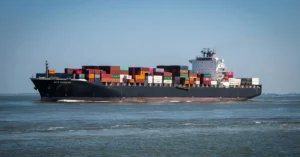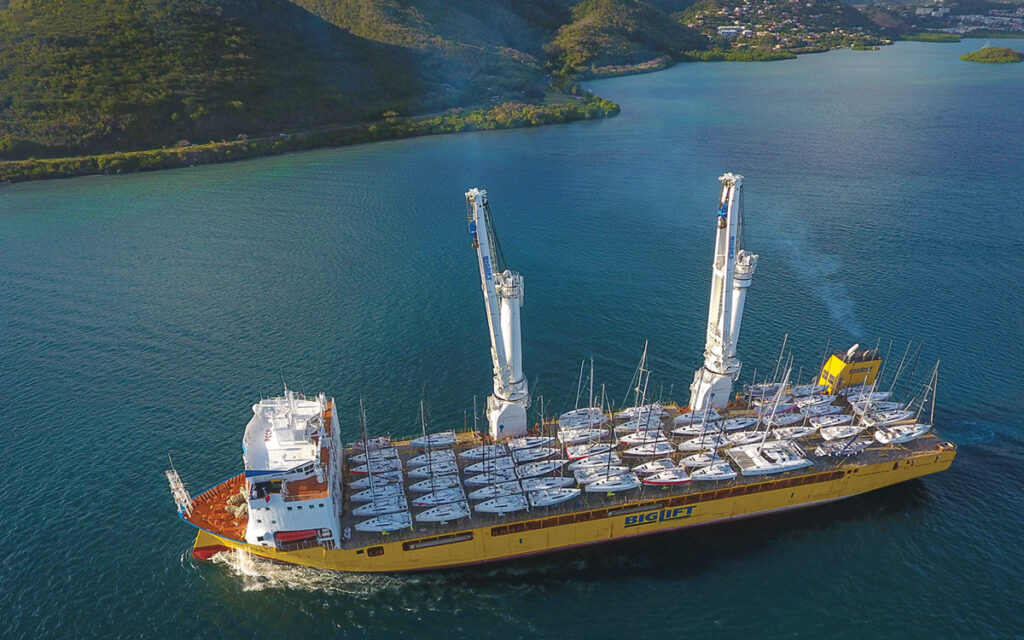Transporting a boat from one place to another can be a tricky process. Depending on the boat’s size, type, and destination, there are various ways to get it there.
In this article, we will discuss the different methods of transporting a boat, from land transportation to hybrid forms, and the factors that go into deciding the best method of transportation.
From overland trucking to sea and waterway transportation. We will cover all the methods available for getting a boat from one place to another. Let’s take a look at the methods, as well as the factors that go into choosing the best way for the job.
Land Transportation
Moving a boat via land transportation is an option, although it’s not the most popular. Most vehicles used to transport boats on land are significant, flatbed trucks with adjustable beds to accommodate boats’ sizes and shapes.
An extra axle may be required for additional support for boats that are too large to fit onto the truck bed.
- Determining the size and model of the boat and the type of transportation needed
- Securing the boat to the truck bed
- Installing an extra axle if necessary
- Securing the boat to the truck bed using straps, chains, and other tools
- Inspecting the boat and the truck before loading
- Driving cautiously to the destination
- Unloading and securing the boat at the destination
- Disassembling the extra axle, if necessary
- Checking the boat for damage
Before using land transportation, one should consider the boat’s size and weight, road conditions. And the distance of the journey. Although it is the least expensive method, land transportation is not recommended for long-distance trips due to the risk of damage to the boat.

Sea and Waterway Transportation
Water transportation is the most common method for larger vessels such as yachts, pleasure boats, and commercial vessels.
This method involves the movement of boats on the ocean, rivers, and canals. It is the most cost-effective and time-efficient option for long-distance transportation. To transport a boat along the waterways, the following steps should be taken:
- Prepare the boat for transport, including disconnecting all external connections, removing all personal items, and securing the boat
- Hire a professional boat transporter
- Load the boat onto a transporter, which can be either a barge, a tugboat, or a floating cradle
- Secure the boat properly
- Transport the boat to its final destination.
Sea and waterway transportation is the safest and most reliable way to move boats, significantly larger vessels, long distances. It is often the most cost-effective option, as well. However, it does take more time to transport a boat via the sea or waterways than via land or air.
Air Transportation
Regarding transporting boats, air transportation is an option. Although it is more costly than other methods. Air transportation is best for those who need their boat transported from one continent to another and want it done quickly.
This form of transportation involves loading a boat onto a cargo plane. If the plane is large enough, It can take the whole boat. Otherwise, the boat must be disassembled before it is loaded onto the plane.
The main advantages of air transportation are that it’s the quickest option, and there’s no need to worry about bad weather conditions that may slow down the transport. Some of the disadvantages include the higher cost and the fact that it is more difficult to track the location of the boat while in transit.
Hybrid Methods
When it comes to transporting boats, there are a few hybrid approaches that can be used. A hybrid approach involves a combination of different methods to transport a boat to its destination. Some common hybrid methods include:
Transport & Towing:
This method involves towing the boat while on a transport trailer. This is a cost-effective solution that typically involves a truck and trailer. The boat is loaded onto the trailer and then towed to its destination.
Float On/Float Off:
This method requires cranes and barges to load the boat onto a barge and then float it to its destination. The boat is then lifted off the barge and set into place.
Lift On/Lift Off:
This method involves crane-lifting the boat onto a barge and then lifting it off at its destination. The boat is then set into place.
Each hybrid method has its own advantages and disadvantages. So it is important to consider factors such as cost, distance, and time when determining the best method to transport a boat.

The Impact of Social Media Usage on Transport Policy
The impact of social media usage on transport policy must be balanced. With the rise of platforms like Twitter, Facebook, and Instagram, policymakers can now gather real-time feedback from citizens about their transportation needs and concerns. This immediate access to public opinion allows for a more comprehensive understanding of communities’ issues. Leading to more effective policy decisions. Social media also serves as a tool for disseminating information regarding upcoming transportation projects or regulation changes. Helping keep residents informed and engaged.
Additionally, advocacy groups can use these platforms to mobilize support for specific measures or initiatives that align with their interests, influencing decision-making processes at both local and national levels. Social media has revolutionized how transport policies are developed and implemented by facilitating more excellent communication between government officials and the general public.
Factors Influencing Method Choice
The method of transport chosen for boats largely depends on the size of the boat. The distance of the journey, and the situation’s urgency.
Some of the factors that need to be considered while choosing the type of transport for a boat include:
- Boat size: Larger boats require specialized transportation, such as roll-on-roll-off (RORO) or low-loader trailers. Smaller boats can be transported on a trailer or by other means.
- Distance of the journey: Short-distance trips can be made by trailer, while longer trips require a specialized boat shipping service.
- Urgency: Urgent boats or boats needed for urgent repairs can be transported by air, while non-urgent boats can be transported by sea or waterway.
- Insurance: When transporting boats, it is important to consider insurance requirements and potential liabilities.
- Cost: The cost of transportation can vary depending on the size and distance of the journey, as well as the urgency of the trip.
- Safety: Safety is a significant factor when transporting boats. It is essential to ensure that all safety protocols are followed to avoid accidents or damage to the boat or its passengers.
Parting Words:
Boat transportation is a complex process that requires careful consideration of multiple factors. It is essential to choose the best method for your boat’s size, weight, destination, and any other unique requirements you may have.
Land transportation is often the most cost-effective option. But it has limitations regarding accessibility and distance. Sea and waterway transportation is a good choice when moving your boat to another port or marina. Air transportation is ideal for short-distance transport of boats. Hybrid methods are also available, combining multiple methods to complete the transportation.
Ultimately, the best option for your boat’s transportation depends on your individual requirements. Remember to do your research and consider all the available methods before deciding.
Frequently Asked Questions
Q. Can you provide a cost estimate for transporting my specific type of boat?
A. Absolutely! Carshippingsource.com takes pride in offering personalized and accurate cost estimates for transporting boats of all shapes, sizes, and types. Once you fill out our easy-to-use quote form with details such as your boat’s make and model, dimensions, weight, and desired pick-up and drop-off locations, our team of transportation experts will carefully assess the best route, methods, and equipment needed to safely transport your unique boat. With our extensive network of carriers and competitive rates, we guarantee a reliable and affordable solution for shipping your watercraft. Trust carshippingsource.com to take care of all your boat transportation needs with efficiency and professionalism.
Q. What options do I have for shipping my boat domestically or internationally?
A. With carshippingsource.com, you have a variety of options for shipping your boat domestically or internationally. Our reliable and experienced team can transport your boat on a truck, ship, or even by air depending on the size and destination. We also offer different levels of service, from port-to-port to door-to-door, ensuring that you have the most convenient and cost-effective option for your specific needs. Our seamless booking process and excellent customer service make shipping your boat hassle-free and our extensive network ensures timely delivery no matter where in the world your boat needs to go. So sit back, relax, and let us take care of getting your boat safely to its destination.
Q. How are boats typically transported over long distances?
A. It’s not every day that you need to transport a boat, so when the time comes, it’s natural to have questions about the process. At carshippingsource.com, we specialize in safely and efficiently transporting boats of all sizes and types over long distances. Depending on the size of the boat, it may be transported by land or sea. For smaller boats, we use specialized trucks equipped with hydraulic lifts to safely load and secure the boat for transportation. Larger boats may require transport via cargo ship, where our team will ensure proper handling and securing throughout the journey. No matter the size or distance, carshippingsource.com has the expertise and resources to transport your boat with care and peace of mind.

